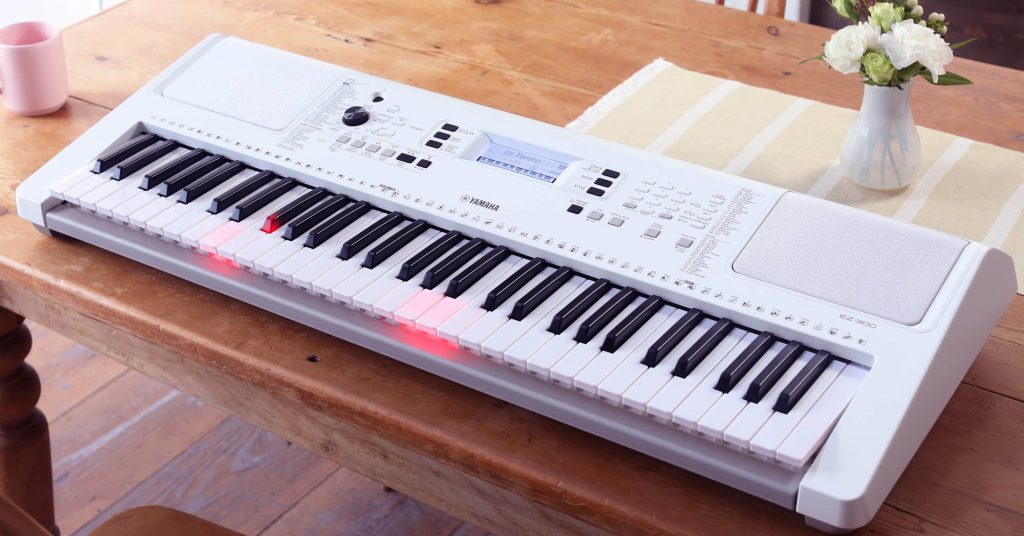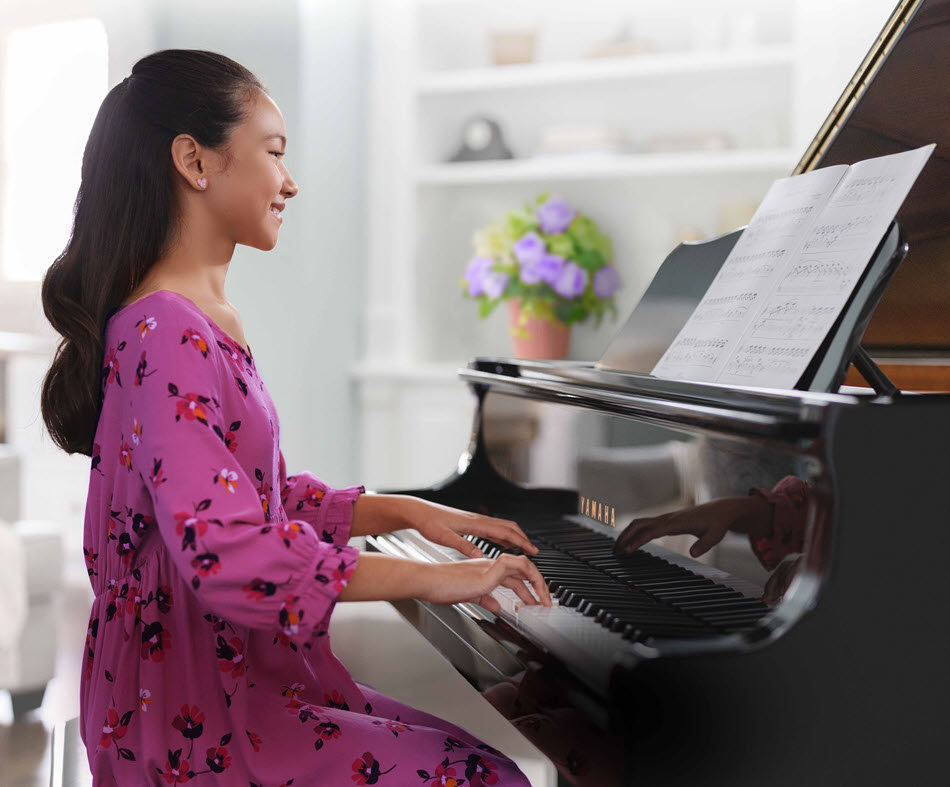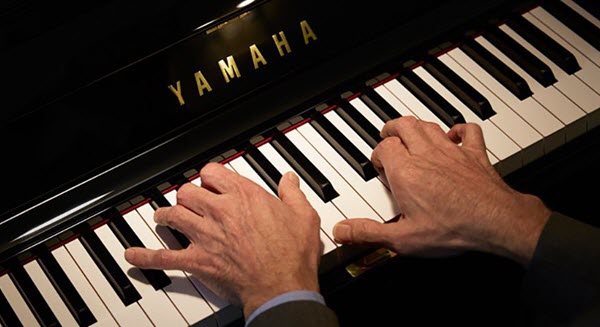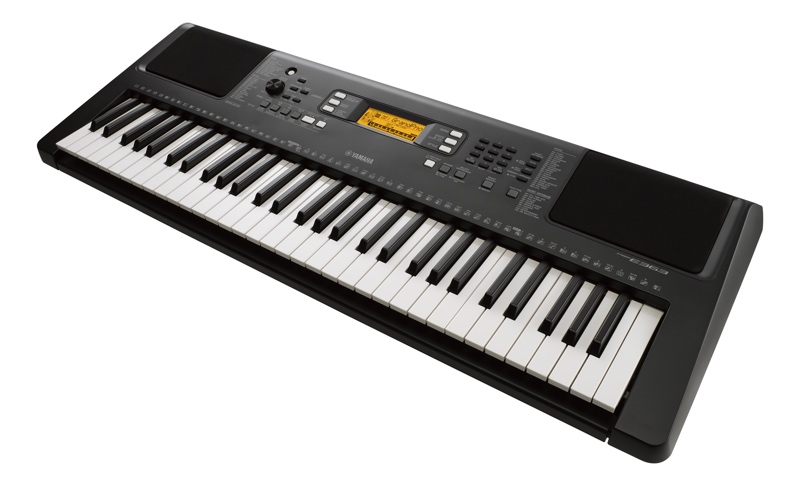Passing the Baton
The PSR-EW300 builds on the legacy of the most popular portable keyboard in history.
You’ve got a child that’s interested in learning to play keyboard. Great news! The question then becomes, how much should you invest in their curiosity? You don’t want to discourage them, but what if they lose interest after awhile? The answer is to purchase a quality instrument — one that’s more than a toy — at an affordable price.
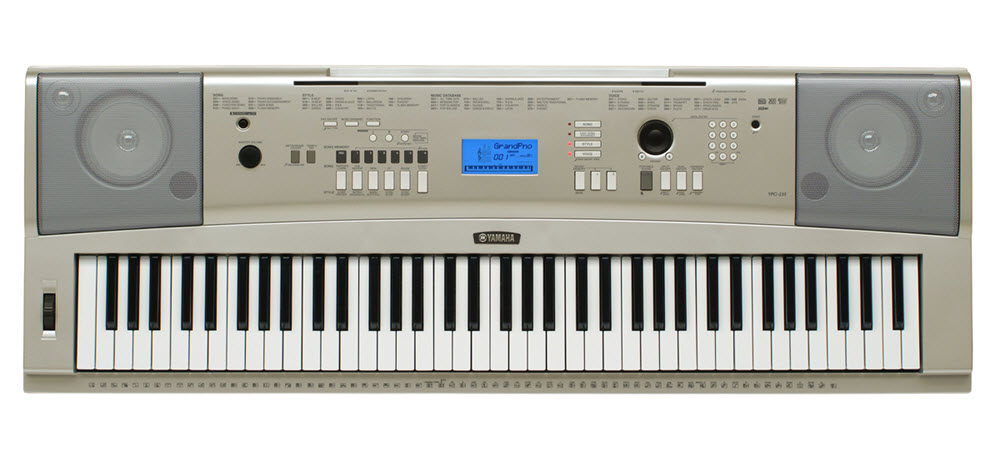
Over the past eight years, more than a million parents worldwide found the perfect solution in the Yamaha YPG-235, which became the most popular portable keyboard in history. There are many reasons why. For one thing, most lower-priced keyboards have just 61 keys, where the YPG-235 offered 76 — a lot closer to the 88 keys offered by a real piano. In addition, the keys are touch sensitive, which means the harder you strike them, the louder they sound, just like on a piano. And finally, there are enough features that, once practice time is done, the aspiring musician can play, experiment and create by auditioning hundreds of Voices (sounds), drums and drum patterns, and then recording their efforts right on the instrument itself — no extra hardware required.
Sooner or later, however, every company needs to replace even their best-sellers with products that offer the latest technologies — passing the baton, if you will. Enter the PSR-EW300, a powerful yet cost-effective new instrument that builds on what made the YPG-235 so popular.
Like its predecessor, the PSR-EW300 also features 76 touch-sensitive keys, hundreds of sounds and recording capability, but it adds some newer features that have come along in the last few years, the biggest one in the area of connectivity. Both keyboards have USB for storing songs and connecting to computer devices, but the PSR-EW300 adds audio capability over USB that allows you to take crystal clear digital audio and send it directly to your favorite device for recording and sharing with friends or uploading your performances to music sites — a feature that is generally found only in professional synthesizer products. In addition, there’s an AUX IN, which allows you to play along with your favorite music player, and a Melody Suppressor feature that cancels the vocal or melody track on songs, allowing you to play or sing the melody yourself.
The PSR-EW300 provides 574 Voices (as opposed to 489 on the YPG-235) and offers a whopping 48 notes of polyphony (the YPG-235 had 32) to make sure there are no dropouts, even when playing lots of notes at the same time.
Why do you need so much polyphony? After all, you only have ten fingers. Well, if you have the Style engine going — which is basically a backing band that follows your chords — the keyboard could be using quite a few notes for bass, guitar, and drum tracks, in addition to the notes you’re playing yourself. In addition, there’s a Duo mode that allows you to layer two sounds at a time, such as Piano and Strings. Those kinds of combinations sound wonderful … but they eat double the notes. The bottom line is, more polyphony is better.
The PSR-EW300 comes with 154 built-in Songs (the YPG-235 had 30, plus another 70 on CD-ROM) and, in addition to the “Listen & Learn,” “Chord Dictionary” and “Waiting” on-board lessons found on the YPG-235, it adds new ones, such as “Keys To Success,” “Chord Progression” and “Touch Tutor.” These are all powerful tools to not only help make learning fun and easy but to put your child on the path of a lifetime of music enjoyment.
And, when all is said and done, isn’t that the true value of any musical instrument?
Click here for more information about the PSR-EW300.











